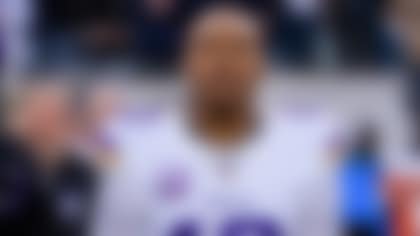The more things change, the more they stay the same.
That's what opponents will soon realize after facing Andrew Luck and a rebuilt Indianapolis Colts offense that is eerily similar to the unit that dominated the AFC for more than a decade.
Although the loss of Peyton Manning and the images of a dismal 2011 campaign make it difficult to imagine a swift turnaround for the Colts, I believe the pieces are in place for the team to quickly rejoin the ranks of the elite, particularly on offense.
Here are three reasons why the Colts' offense will be much better than anyone thinks in 2012:
1) Luck's wealth of college experience will lead to instant success as a pro.
Wyche: AFC divisional challengers
Who are the biggest threats to reigning kings of each AFC division? Steve Wyche likes the Bengals and Bills, among others. **More ...**
In looking at the most productive rookie quarterbacks in the NFL in recent history, it has been experience and a winning pedigree that has been critical to their success. According to a formula used by Bill Parcells, quarterbacks entering the league with 30-plus starts and at least 23 victories are far more successful than their counterparts. Luck certainly qualifies after compiling a 31-7 record in 38 career starts at Stanford. He led the Cardinal to 23 wins in the past two seasons alone (and a pair of BCS bowl games), restoring a program that had been downtrodden prior to his arrival.
Luck's gaudy collegiate résumé certainly points to eventual success as a starter in the NFL, but it is his extensive experience directing a pro-style offense that leads me to believe he will put up big numbers in his rookie season. At Stanford, Luck orchestrated a system deeply rooted in the principles of Bill Walsh's West Coast offense, and his mastery of those concepts puts him well ahead of the game. From "22-Scat Hank" to "2 Jet Flanker Drive," Luck understands the pass protection, route progressions and verbiage of the NFL's prevalent offensive system. This should accelerate his decision making in the pocket, leading to fewer mistakes and generally efficient play.
Luck's extensive collegiate experience has prepared him for the complex defensive fronts and coverages presented by NFL defensive coordinators. He has faced a variety of attack-style defenses in the Pac-12, providing him with the opportunity to make hot reads or pre-snap adjustments to alter pass protection. In addition, Luck spent parts of his final season at Stanford calling his own plays and assisting coaches with the implementation of the game plan.
With confidence and preparation paramount to the success of young quarterbacks, Luck has all the tools to be an impact player in his first season.
2) Bruce Arians is a masterful developer of young quarterbacks.
It is not a coincidence that Arians was appointed the architect of the Colts' offense following his distinguished track record of success with young quarterbacks. Arians has tutored the likes of Peyton Manning, Tim Couch and Ben Roethlisberger during his time in the league, and his ability to maximize their collective talents has been lauded by his peers.
As a disciple of Tom Moore, he has constructed a quarterback-friendly offense that places the onus on the signal caller to make sound decisions at the line. From calling pass protections to pointing out potential hot reads, the system makes the quarterback accountable for all aspects of the offense. To Arians' credit, he has been known to alter the verbiage of his system to allow his QB to become comfortable. His adaptability and willingness to incorporate his franchise quarterback's opinion into his game plan builds a chemistry and rapport that routinely leads to success.
For example, Arians took advantage of Roethlisberger's improvisational skills and mastery of spread-offense principles to install a wide-open offense in Pittsburgh that routinely placed three and four receivers on the field. He added several varieties of bunch formations and quirky sets to create quick, easy throws for his quarterback. In Cleveland, he adapted his offense to mask Couch's arm deficiencies by utilizing crossing routes from shotgun formations and open sets.
Given Luck's fantastic overall skill set, he will likely meld his previous offensive philosophies with some of the concepts from Stanford's playbook to ensure his young quarterback reaches a comfort level early in his first season.
As a play caller, Arians has a preference for putting the ball in the air, but his game plans are rooted in a balanced approach. He favors a 50/50 run-pass ratio during the first three quarters, but will skew his play calls in the final quarter based on game situations. While this is the approach followed by most offensive coordinators, Arians routinely will flip the script by opening the game with a variety of passes to loosen up the defense before pounding away with a bruising runner between the tackles. With a young quarterback in place capable of making sound decisions and pinpoint throws, a decision to open up the playbook will speed his development and quickly help the Colts' offense return to elite status.
3) The Colts are building an "old school" offense that will be problematic for opponents.
During the late 1990s, the Colts befuddled opponents utilizing a two-tight end set that featured Ken Dilger and Marcus Pollard. These two were interchangeable as playmakers in the Colts' "12" personnel package, and their ability to make plays over the middle of the field put defensive coordinators in a quandary. If opponents stayed with their base personnel, the Colts would displace one of the tight ends to take advantage of a favorable matchup against a linebacker in space. If the defense trotted out a nickel package, the Colts would routinely align in an ace formation and run the ball off tackle on a stretch play or post up one of the tight ends against a smaller defender in the passing game. The defense rarely came up with effective answers, and the success of the offense fueled the Colts' ascension in the AFC.
In looking at the Colts' draft, the selections of Coby Fleener and Dwayne Allen signal a return to that approach in 2012. Both are exceptional playmakers, but they bring different skills to the table.
Fleener is the better athlete. He is at his best working on vertical routes from an inline or split alignment. Luck's teammate at Stanford is ideally suited to play as the H-back or "Move" tight end in the offense, which makes him the matchup nightmare for opposing defenses.
Allen is a silky smooth route runner with outstanding hands. He shows an uncanny knack for getting open over the middle of the field and effectively uses his size against smaller defenders. While he lacks the speed and explosiveness to consistently threaten the deep areas of the field, his ability to control the middle will open up windows for Reggie Wayne and Co. outside the numbers.
Luck is already very comfortable targeting tight ends -- Stanford's offense extensively featured two- and three-tight end formations in the passing game -- so the addition of two unique playmakers will not only put the defense in a bind, but also it could allow the Colts' new franchise quarterback to get off to a fast start in 2012.
Follow Bucky Brooks on Twitter @BuckyBrooks












